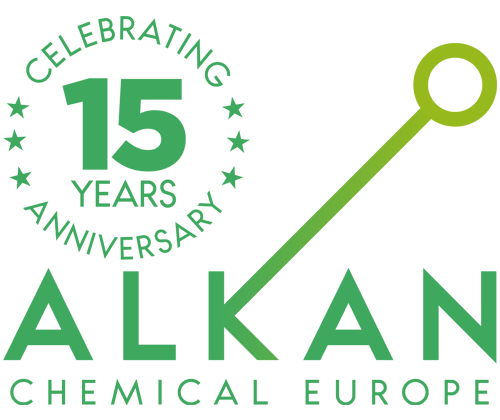Pharmaceutical supply chains in Europe and MENA face persistent pressure from price volatility, single-origin dependencies, and evolving regulatory expectations. A structured second-supplier strategy is no longer a “nice to have”. It is a board-level capability that protects continuity of supply, stabilizes total cost, and shortens recovery time when disruptions occur. Regulators reinforce this direction by promoting quality risk management, proactive shortage prevention, and stronger supplier oversight.
Why second-supplier strategies matter
Continuity of supply
Dual sourcing reduces exposure to quality events, capacity constraints, export restrictions, or transport shocks. EMA guidance for industry explicitly emphasizes prevention and mitigation planning across the supply chain to minimise shortages and their impact on patients.
Regulatory alignment
ICH Q9(R1) places risk identification, analysis, and control at the heart of lifecycle management. A qualified alternative source is a tangible risk control for critical materials, supported by documented comparability and change management.
Resilience as policy
The European Commission’s Pharmaceutical Strategy and ongoing legislative reform highlight security of supply and shortage prevention as policy objectives, encouraging diversified and transparent value chains.
Operational and economic stability
Second suppliers create competitive tension on price, reduce expedite premiums, and enable smarter inventory positioning near demand. Industry bodies such as ISPE frame multi-sourcing and robust quality systems as pillars of shortage prevention.
What “second supplier” really means
A second supplier is a fully qualified manufacturer that can supply the same material to the same specification, with appropriate technical, quality, and regulatory documentation. In practice, most companies segment by criticality:
- Tier A: Highly critical APIs and functional excipients
Parallel qualification, dual listing in the MA file where applicable, and defined switch criteria. - Tier B: Important but lower criticality
Qualification kept warm with periodic pilots and paperwork currency. - Tier C: Non-critical
Approved as back-up with longer activation lead time.
This segmentation aligns with the ICH Q9(R1) expectation that risk controls should be commensurate with criticality.
The business case: beyond unit price
Procurement teams increasingly evaluate risk-adjusted total cost of ownership that includes:
- Lead-time variability and the cost of safety stock
- Expedited freight risk
- Documentation cycle time and release delays
- Potential write-offs from supply interruptions
- Working-capital impact of long import routes
A second supplier reduces several of these cost drivers at once by creating optionality, which is consistent with EU-level efforts to address structural shortage risks in essential medicines.
A practical roadmap to qualify a second supplier
1) Define comparability and target use
Document quality attributes, functional performance requirements, and pharmacopeial acceptance criteria. For excipients, include functionality-related characteristics such as flow, particle size distribution, viscosity, and compaction behavior.
2) Technical screening
Evaluate certificates, GMP history, pharmacopeial compliance, stability data, and prior inspections. Shortlist by technical fit and documentation readiness, in line with EMA shortage-prevention good practices that stress early prevention measures.
3) Pilot and scale-down studies
Run lab and pilot batches to verify manufacturability and performance equivalence. For tablets, compare blend uniformity, tabletability, dissolution, and coating performance.
4) Quality system integration
Put a Quality Agreement in place that defines roles, change notifications, testing, deviation handling, and audit rights. FDA guidance clarifies expectations for clarity of responsibilities in contract arrangements and supplier oversight.
5) Regulatory and change control
Align with RA on documentation strategy: whether updates will be handled as variations, supplements, or maintained outside the MA for certain excipients, depending on jurisdiction. Keep a synchronized dossier pack ready to accelerate activation.
6) Operational readiness
Position inventory appropriately, validate logistics lanes, and pre-book capacity for peak demand. ISPE’s Drug Shortages Prevention Model emphasises end-to-end readiness and communication plans.
Technical pitfalls to avoid
- Assuming pharmacopeial equivalence equals functional equivalence
Two MCC or HPMC grades may meet the same monograph yet behave differently in compression or viscosity. Always test against the actual process window. - Ignoring documentation lead time
Delays in COA, SDS, stability or CEP/DMF support can stall qualification. Build document SLAs into Quality Agreements and supplier scorecards. - Late logistics validation
Validate lanes and temperature controls early. Good Distribution Practice expectations mean storage and transport need documented qualification, not just good intentions.
Metrics that prove second-supplier value
- Reduction in sole-source exposure for Tier A materials
- Lower lead-time variability and fewer expedites
- On-time release improvement due to faster document turnaround
- Stable cost to serve across demand peaks
- Audit findings closure time for external suppliers
These indicators align with regulator and industry guidance that encourages proactive risk control and prevention of shortages rather than reactive mitigation.
How Alkan Chemical Europe helps implement second-supplier strategies
- Multi-origin sourcing for critical APIs and excipients to create genuine optionality
- EU warehousing in Belgium for consolidation, predictable lead times, and faster switchovers
- Side-by-side technical comparisons and pilot support for functional excipients such as HPMC, HPC, MCC, PVP, Mannitol, Magnesium Hydroxide, and Calcium Carbonate DC
- Documentation orchestration including COA and SDS collections and support for DMF, CEP, and CTD where applicable
- Quality and logistics integration with defined change-control triggers and GDP-aligned distribution records
If you are preparing 2026 to 2027 dual-sourcing programs or need to qualify cost-optimised alternatives for Europe and MENA, our team can build a practical, compliant plan that fits your portfolio.
Email info@alkan-chemical.com
Products https://alkan-chemical.com/products/
Alkan Chemical Europe
Unlocking Potential, Enriching Formulations
References
- ICH Q9(R1) Quality Risk Management, final guideline. Principles and tools for lifecycle risk control across materials, manufacturing, and distribution. ICH Database
- EMA. Medicine shortages and availability issues, guidance for companies on prevention and mitigation. European Medicines Agency (EMA)
- European Commission. Pharmaceutical Strategy for Europe and legislative reform focused on security of supply. Public Health+1
- ISPE. Drug Shortages Prevention Model and related best practice resources. ispe.org
- FDA. Quality Agreements guidance for industry on roles, change notification, and oversight in outsourced manufacturing. U.S. Food and Drug Administration
- EU Guidelines on Good Distribution Practice for medicinal products for human use. ispe.org
